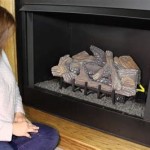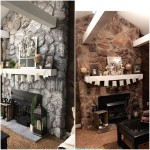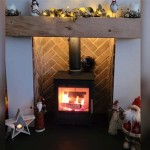Mounting a Flat Screen TV Over a Brick Fireplace: A Comprehensive Guide
Mounting a flat-screen television above a brick fireplace offers an appealing aesthetic, creating a focal point in a living space. However, this project presents unique challenges compared to mounting on a standard drywall surface. Factors such as the structural integrity of the brick, the management of heat from the fireplace, and concealing wiring must be carefully considered to ensure a safe and visually pleasing installation. This article provides a detailed guide to navigating these challenges and successfully mounting a flat screen TV over a brick fireplace.
Assessing the Suitability of the Fireplace and Wall
Before beginning the mounting process, a thorough assessment of the fireplace and surrounding brick wall is crucial. This assessment involves several key considerations.
First, the type and condition of the brick must be evaluated. Older or more porous brick may not provide the necessary support for the weight of the television and mounting hardware. Crumbling or cracked brick indicates structural weakness that requires repair before proceeding. Identifying the type of brick (e.g., common brick, face brick) can provide insights into its density and load-bearing capacity.
Second, the fireplace's usage frequency and heat output must be taken into account. Excessive heat exposure can damage the television's internal components, shortening its lifespan. Consider alternatives if the fireplace is frequently used for extended periods. If the fireplace remains in occasional use, explore heat shielding options or increased distance between the fireplace and television.
Third, the presence of a chimney flue and its potential impact on drilling and wiring must be investigated. Avoid drilling directly into the chimney flue, as this can compromise its functionality and create a safety hazard. Furthermore, understanding the location of the flue helps in planning wire routing to avoid obstructions.
Fourth, the availability of electrical outlets and cable connections near the mounting location needs to be verified. If outlets are not readily available, an electrician should be consulted to install new ones safely and according to local electrical codes. Running extension cords across the fireplace or floor presents a fire hazard and detracts from the clean, professional appearance of the installation.
Finally, measuring the dimensions of the television and the available space above the fireplace is essential for selecting an appropriately sized mount and ensuring that the television is centered and at a comfortable viewing height. Consider the viewing angle from typical seating positions to optimize the television's placement.
Selecting the Appropriate Mounting Hardware and Tools
Choosing the correct mounting hardware is paramount for a secure and stable installation. Several factors influence this selection, including the weight of the television, the type of brick, and the desired viewing angle.
A heavy-duty mount specifically designed for brick or masonry walls is essential. These mounts typically feature a wider base plate to distribute the weight over a larger surface area. Verify that the mount's weight capacity exceeds the television's weight by a significant margin to provide an extra safety buffer.
Masonry drill bits are specifically designed for drilling through brick, concrete, and other hard materials. Carbide-tipped drill bits are recommended for their durability and cutting efficiency. The size of the drill bit should correspond to the diameter of the masonry anchors being used.
Masonry anchors are responsible for securing the mount to the brick wall. Several types of masonry anchors are available, including sleeve anchors, wedge anchors, and concrete screws. Sleeve anchors are commonly used for lighter loads, while wedge anchors offer superior holding power for heavier televisions. Concrete screws provide a secure connection and are relatively easy to install. The choice of anchor depends on the weight of the television and the density of the brick.
A level is indispensable for ensuring that the mount and television are perfectly horizontal. Using a laser level can further enhance accuracy. A stud finder, while not directly applicable to brick walls, can be used to identify the location of studs in adjacent walls, which may be relevant for routing wires.
Other essential tools include a hammer drill, a socket wrench or adjustable wrench for tightening the anchors, a screwdriver (both Phillips head and flathead), wire strippers, wire connectors, and cable ties. Safety glasses and gloves should be worn throughout the installation process to protect against debris and potential injuries.
Step-by-Step Installation Process
The installation process requires careful planning and execution to ensure a safe and aesthetically pleasing result.
1.
Preparation:
Begin by laying down a protective covering over the fireplace hearth and surrounding floor to prevent damage from debris. Gather all necessary tools and hardware. Carefully unpack the television and mount, and verify that all components are present. Consult the television's user manual for specific mounting instructions and recommendations.2.
Marking the Mounting Location:
Using a level and measuring tape, determine the desired location for the mount on the brick wall. Ensure that the location is centered above the fireplace and at a comfortable viewing height. Use a pencil to mark the positions of the mounting holes on the brick. Double-check the measurements to ensure accuracy.3.
Drilling Pilot Holes:
Using a hammer drill and a masonry drill bit of the appropriate size, drill pilot holes at the marked locations. Apply steady pressure and maintain a consistent angle while drilling. Drill to the depth recommended by the anchor manufacturer. Take care not to drill too deeply, as this can weaken the brick.4.
Installing the Mounting Plate:
Insert the masonry anchors into the pilot holes. Use a hammer to gently tap the anchors into place until they are flush with the surface of the brick. Attach the mounting plate to the anchors using the appropriate screws or bolts. Tighten the fasteners securely using a socket wrench or adjustable wrench. Ensure that the mounting plate is level.5.
Attaching the Mounting Arms to the Television:
With assistance, carefully lift the television and attach the mounting arms to the back of the television using the screws provided with the mount. Ensure that the arms are securely fastened and properly aligned.6.
Connecting the Television to the Mounting Plate:
With assistance, carefully lift the television and align the mounting arms with the mounting plate. Secure the television to the mounting plate using the locking mechanism or screws provided with the mount. Double-check that the television is securely attached and cannot be easily dislodged.7.
Routing and Concealing Wires:
Route the power cord, HDMI cables, and other necessary wires from the television to the appropriate outlets and devices. Consider using a cable management system to conceal the wires and prevent them from dangling. Options include cable raceways, in-wall cable management kits, and paintable cable covers. Ensure that the wires are not exposed to excessive heat from the fireplace.8.
Testing and Adjustments:
Turn on the television and verify that it is functioning properly. Adjust the viewing angle as needed to optimize the viewing experience. Tighten any loose screws or fasteners. Clean up any debris and remove the protective covering from the fireplace hearth. Inspect the installation to ensure that it is safe and aesthetically pleasing.Addressing Heat and Ventilation Concerns
The proximity of a television to a fireplace raises concerns about heat exposure and ventilation. Prolonged exposure to excessive heat can damage the television's internal components, leading to premature failure. Proper ventilation is essential to dissipate heat and prevent overheating.
Increasing the distance between the television and the fireplace is an effective way to reduce heat exposure. A minimum distance of 12 inches is generally recommended, but this may vary depending on the fireplace's heat output. A heat shield can be installed above the fireplace to deflect heat away from the television. Heat shields are typically made of metal or other heat-resistant materials.
Ensuring adequate ventilation around the television is crucial for dissipating heat. Avoid blocking the television's ventilation ports, which are typically located on the back or sides of the television. Consider using a mount that allows for some airflow behind the television. Regularly clean the television's ventilation ports to remove dust and debris that can impede airflow.
Monitoring the temperature of the television and the surrounding area can help identify potential overheating issues. Use a thermometer to measure the temperature of the television's casing and the air above the fireplace. If the temperature exceeds the manufacturer's recommended operating range, take steps to reduce heat exposure or improve ventilation.
Consider using an electric fireplace insert instead of a traditional wood-burning or gas fireplace. Electric fireplace inserts produce less heat and offer more control over temperature settings, reducing the risk of damaging the television. They also eliminate the need for a chimney flue, simplifying the installation process.

How To Mount A Tv Over Brick Fireplace And Hide The Wires Designing Vibes Interior Design Diy Lifestyle

Can I Mount My Tv Above The Fireplace

How To Mount Tv On Brick Fireplace Wall Step By The Men

Tv Mounting Over A Brick Fireplace With Wires Concealed In Wire Molding S

How To Mount A Tv On Brick Fireplace 7 Straightforward Steps

Your Tv Doesn T Belong Over The Fireplace Cnet

Can I Mount My Tv Above The Fireplace

Tv Mounted On A Brick Fireplace In Lexington Cky Platinum Audio Visual

Flat Screen Tv Mounting Over Brick Fireplace South Hampton Ny

How To Mount A Tv Onto Brick Fireplace
Related Posts








